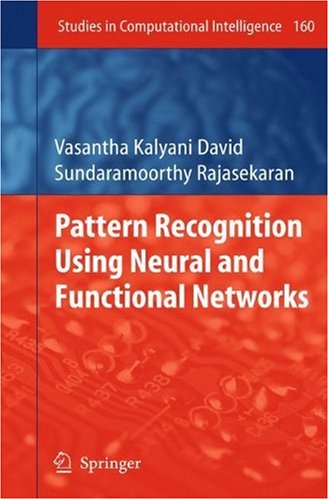

Most ebook files are in PDF format, so you can easily read them using various software such as Foxit Reader or directly on the Google Chrome browser.
Some ebook files are released by publishers in other formats such as .awz, .mobi, .epub, .fb2, etc. You may need to install specific software to read these formats on mobile/PC, such as Calibre.
Please read the tutorial at this link: https://ebookbell.com/faq
We offer FREE conversion to the popular formats you request; however, this may take some time. Therefore, right after payment, please email us, and we will try to provide the service as quickly as possible.
For some exceptional file formats or broken links (if any), please refrain from opening any disputes. Instead, email us first, and we will try to assist within a maximum of 6 hours.
EbookBell Team

4.7
86 reviews
ISBN 13: 9783540851295
Author: Vasantha Kalyani David, S Rajasekaran
Biologically inspiredcomputing isdi?erentfromconventionalcomputing.Ithas adi?erentfeel; often the terminology does notsound like it’stalkingabout machines.The activities ofthiscomputingsoundmorehumanthanmechanistic as peoplespeak ofmachines that behave, react, self-organize,learn, generalize, remember andeven to forget.Much ofthistechnology tries to mimic nature’s approach in orderto mimicsome of nature’s capabilities.They havearigorous, mathematical basisand neuralnetworks forexamplehaveastatistically valid set on which the network istrained. Twooutlinesaresuggestedasthepossibletracksforpatternrecognition.They are neuralnetworks andfunctionalnetworks.NeuralNetworks (many interc- nected elements operating in parallel) carryout tasks that are not only beyond the scope ofconventionalprocessing but also cannotbeunderstood in the same terms.Imagingapplicationsfor neuralnetworksseemtobea natural?t.Neural networks loveto do pattern recognition. A new approachto pattern recognition usingmicroARTMAP together with wavelet transforms in the context ofhand written characters,gestures andsignatures havebeen dealt.The KohonenN- work,Back Propagation Networks andCompetitive Hop?eld NeuralNetwork havebeen considered for various applications. Functionalnetworks,beingageneralizedformofNeuralNetworkswherefu- tionsarelearnedratherthanweightsiscomparedwithMultipleRegressionAn- ysisforsome applicationsandtheresults are seen to be coincident. New kinds of intelligence can be added to machines, and we will havethe possibilityof learningmore about learning.Thus our imaginationsand options are beingstretched.These new machines will be fault-tolerant,intelligentand self-programmingthustryingtomakethemachinessmarter.Soastomakethose who use the techniques even smarter. Chapter1isabrief introduction toNeural and Functionalnetworks in the context of Patternrecognitionusing these disciplinesChapter2 givesa review ofthearchitectures relevantto the investigation andthedevelopment ofthese technologies in the past few decades. Retracted VIII Preface Chapter3begins with the lookattherecognition ofhandwritten alphabets usingthealgorithm for ordered list ofboundary pixelsas well as the Ko- nenSelf-Organizing Map (SOM).Chapter 4 describes the architecture ofthe MicroARTMAP and its capability.
pattern recognition examples
pattern recognition machine learning algorithm
pattern recognition models
neural network pattern recognition
pattern recognition machine learning
pattern recognition allows us to see a familiar face
Tags: Vasantha Kalyani David, S Rajasekaran, Recognition, Neural